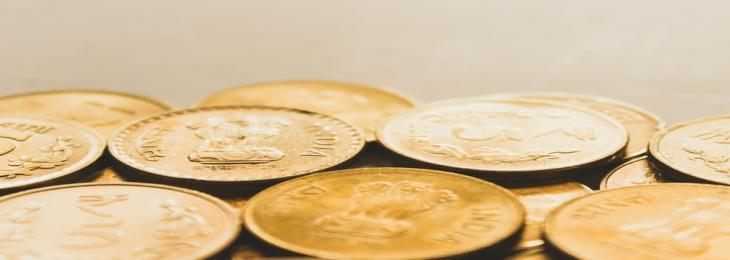
When we look at the world, it is still ruled by cash. However, there are pockets of places that are moving away from cash. Currently, Sweden is at the top when it comes to embracing digital payments. If this continues, Sweden could effectively go cashless by 2023 and may gain the title of the world's first cashless society. This means, by 2023 Sweden may no longer accept cash as a means of payment. Electronic payment modes like bank cards and Swish (a Swedish mobile payment system) are used for transactions in Sweden. It seems like Swedes no longer carry cash.
Cash represents only 1% of the Gross Domestic Product (GDP) in the Scandinavian country, and the number of cash withdrawals is declining with the passing of every year.
Well, let us look at what exactly is a cashless economy.
It is a system where no physical cash is in circulation. Payments are made only through credit and debit cards, bank electronic fund transfers or virtual wallets. This includes cash transfer through credit and debit cards, direct debit, and electronic clearing and payment systems such as Immediate Payment Services (IMPS), National Electronic Funds Transfer (NEFT) and Real-Time Gross Settlement (RTGS) in India.
Is India ready to be a cashless economy?
Pradhan Mantri Jan Dhan Yojana, Direct Benefit Transfer (DBT), Unified Payment Interface (UPI) are some government initiatives which promote a cashless system.
Demonetization nudged India towards being a cashless economy. Demonetization is the act of stripping a currency unit of its status as legal tender. It occurs whenever there is a change of national currency: The current form or forms of money are pulled from circulation and retired, often to be replaced with new notes or coins. In November 2016, India went through demonetization. It was a radical ‘reform’ to transform India into a cashless economy.
Demonetization had a twofold agenda; to reduce the circulation of black money and promote the growth of a cashless economy. With new notes in the banks, people were pushed to find another way to get about their daily lives, i.e., digital transactions. Before demonetization, about 95% of transactions were completely cash and less than 15% of vendors had card swipe machines. Most of the population did not have a bank account and cash was the preferred choice for all purchases. The real innovation in mobile payments in India began a few months prior to the cash ban. It is called a unified payment interface, or UPI. The idea is simple. One smartphone owner who is a customer of Bank A can request a payment from, or initiate a payment to, another owner who has an account with Bank B. Neither party needs to know anything more than each other’s mobile number or a virtual ID. They don’t even need to use the same mobile app to transact.
According to Razorpay ‘The Era of Rising Fintech’ report, between 2018 and 2019, India saw a mammoth growth of 383 per cent in digital payments. Digital payments in India began to boom even before any of us had heard of coronavirus. The coronavirus pandemic is accelerating the trend toward a cashless economy as people limit their contact with one another. Many businesses have been conducting operations online or by phone. The pandemic has changed the way the world functions in just a few months. Working-from-home and social distancing are the order of the day. The pandemic has prompted retailers to ask customers to wear masks, maintain physical distancing and avoid the use of cash when possible. Once upon a time, the concept of a cashless society may have sounded like it was straight from science fiction, but the rise of e-commerce, flexibility of banking and the growing number of ‘no cash accepted’ signs in physical shops has left purses empty, with the exception of a debit or credit card. According to National Payments Corporation of India (NPCI) data, payments on Unified Payments Interface (UPI) in June hit an all-time high of 1.34 billion in terms of volume with transactions worth nearly Rs 2.62 lakh crore. MobiKwik, an online UPI application acquired around 60 lakh new users during the Lockdown in April and May.
Why should India go cashless?
A cashless system brings down the cost associated with printing, storing and transporting of cash. RBI spends an average of Rs.32.1 billion on printing currency. Also, paper currency has a shelf-life after which it needs to be replaced.
While travelling, it is much easier to use digital money as the risk of money getting stolen or lost is minimal. Even if the card is stolen or lost it is easy to block a credit/debit card or a mobile wallet remotely. It is also a very convenient way of making payments. With the advent of digital modes, one can avoid queue for ATMs, transact 24*7 and save time. With the emergence of e-KYC, it is no longer necessary for service providers to know their customers physically as the payments model has overcome limitations related to physical presence. Moreover, one can keep a track of payments made and manage cash efficiently. A cashless system makes payments transparent and prevents hoarding of black or illegal money. Black money is the unaccounted money and is used for financing terrorist activities, illicit funding for elections, purchasing political decisions, betting, trafficking, and for hijacking democracy.
A cashless system brings about the much needed transparency required in financial transactions. Traders, small businesses, shopkeepers, and consumers regularly use cash as a means to avoid paying service tax, sales tax, etc. A cashless system ensures a higher financial inclusion rate as it mandates all citizens to have bank accounts. Also, it is easier to track the black money and illicit transactions unlike cash based economy in which money does not come into the banking system. In case of digital transactions it is easy to track and monitor suspicious transactions as all the records are available with the banks.
A cashless system comes with a lot of disadvantages.
India is still lagging in the cashless economy race and cash is still king. The Indian economy is cash-based. So much, that, MNCs like Amazon had to incorporate ‘cash on delivery’, just to be able to tap into the Indian market. India is the 4th largest user of cash in the world.
Ideally, on a user base of 750 million cards in the country, the usage on point of sale should be at least 375 million transactions in a month, assuming that the customers, on an average, use the card at least once in two months on a PoS terminal. But data published by the RBI indicates the volume of PoS and e-commerce transactions together for all banks is about 130 million (as against 765 million on ATM channel) as on August 2016.
Internet connection in India is very sporadic. 4G is still not available everywhere. Digital payments are common only in urban areas. India is still shooting in the dark when it comes to cyberspace welfare, and with cyber-attacks becoming increasingly common, digital transactions can get risky. While some companies have increased their cyber security budget, many are still clueless about the monetary damages caused by cyber-attacks. People are also cynical about putting personal information online that can be prone to online risk and identity theft. The Indian Computer Emergency Response Team (CERT-In) has reported a surge in the number of incidents till October 2016 with close to 39,730 security incidents.
A lot of financial institutions such as banks and merchants charge 1-2% on the total amount of transaction when they offer an online payment facility. This cost of making the transaction increases the burden of the customer. People tend to spend more digitally as there are no physical banknotes leaving your hand when you make a purchase.
However the fact remains that most of the Indian population belongs to rural region. They don’t have mobile phones and a large percentage of them are computer illiterate. Though there are a lot of cheap smartphones available in the market, they aren’t affordable by rural India.
According to a report by Google India and Boston Consulting Group, by 2020, $500 billion worth of transactions would take place online. Furthermore, cash-based transactions would fall by 40% in the coming years. The online transactions have increased 20 times in the last 6 years. India stands a chance to progress towards a cashless economy with investment in infrastructure, electrification, and cyber security.
Take Away
In a country where sentiments have a stronger hold than reason, the progression towards a cashless economy can be achieved only after the socio-economic upliftment, which also calls for a changing of mindsets as well as skill sets through education.
While the cashless economy cannot be entirely implemented in the ‘here and now’, there is still scope for it in the future; as India has the potential but lacks the immediate resources and many systematic changes are required to lay the groundwork for a cashless economy. Though cashless transactions have increased, India cannot completely become a cashless economy considering its high proportion of digital illiteracy and cash transactions. India continues to be driven by the use of cash. For now, a cashless society is a distant dream but a less-cash society is still a possibility.






